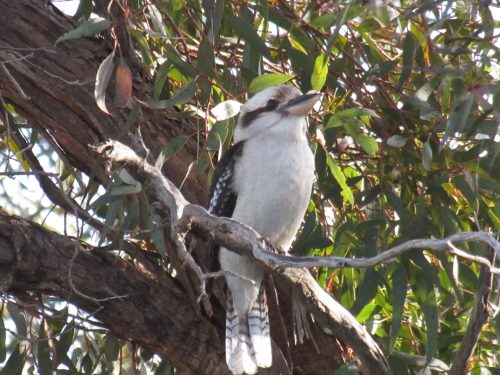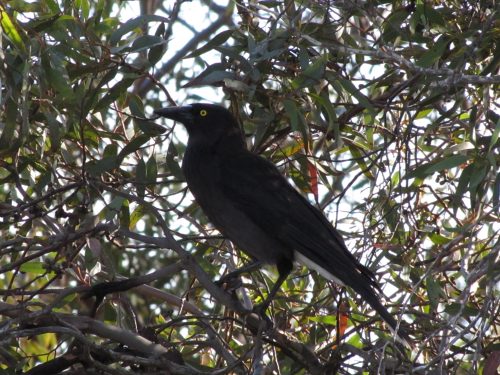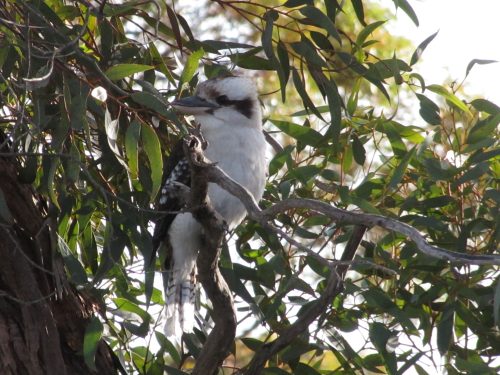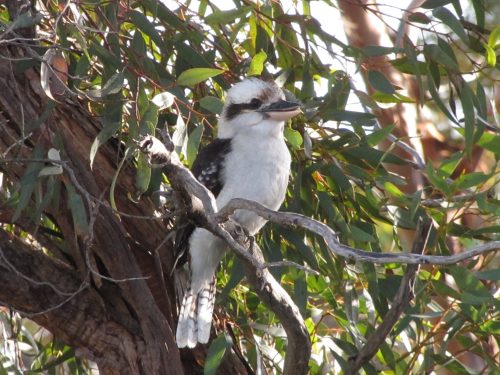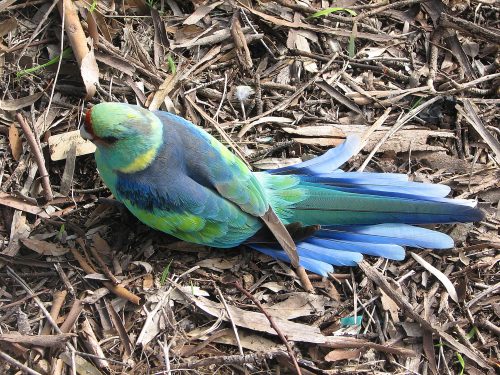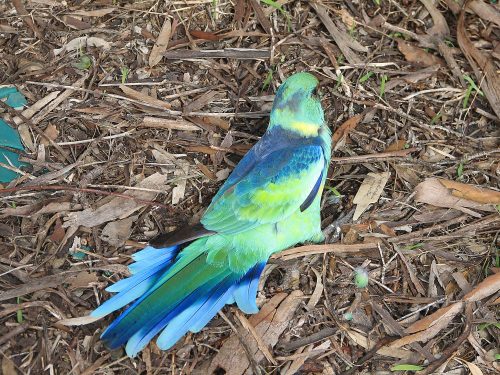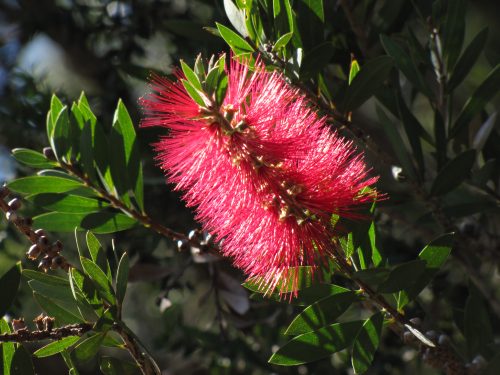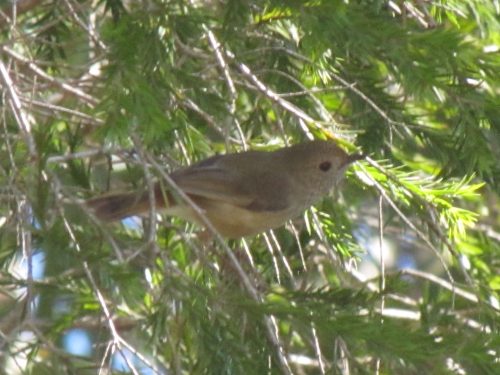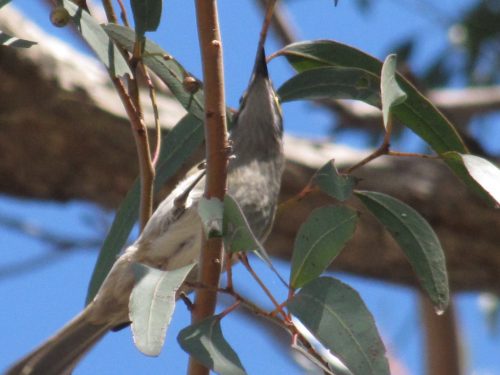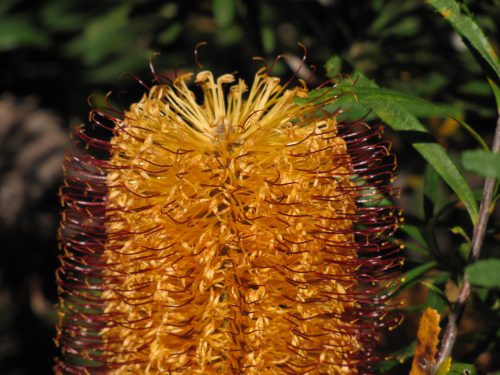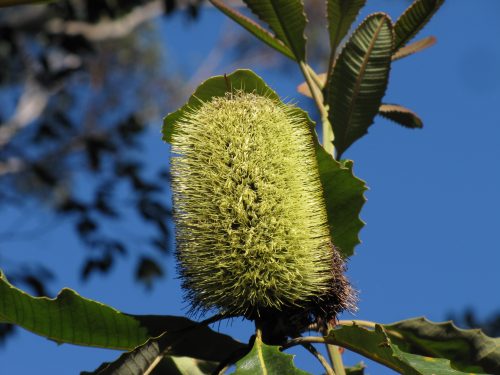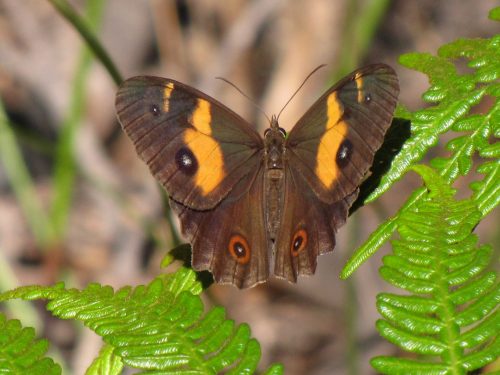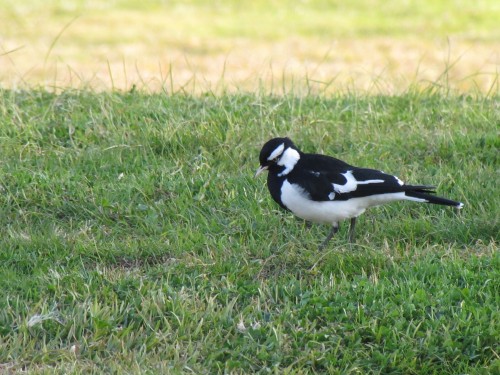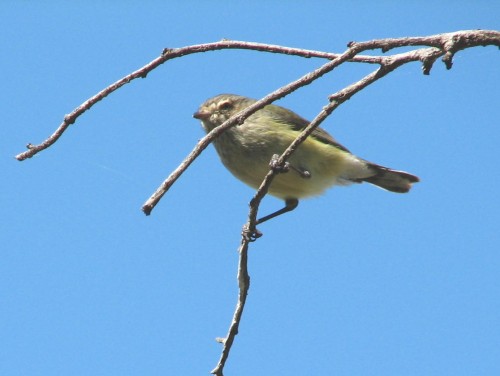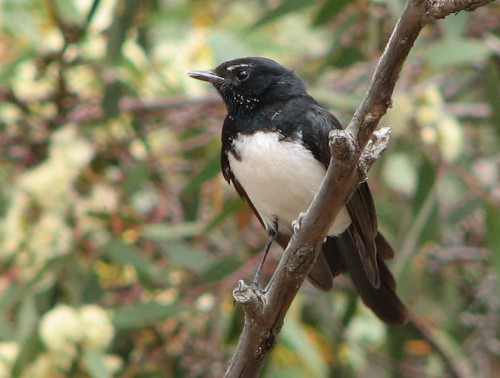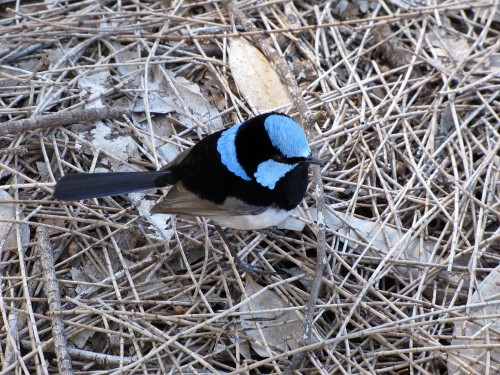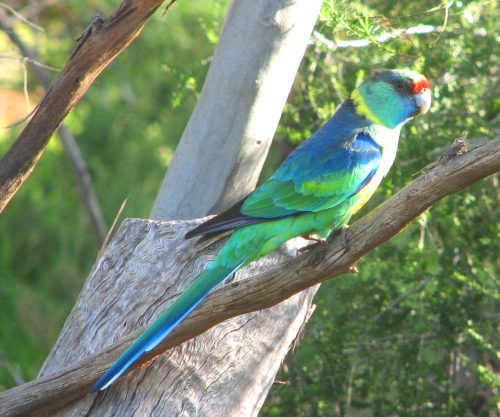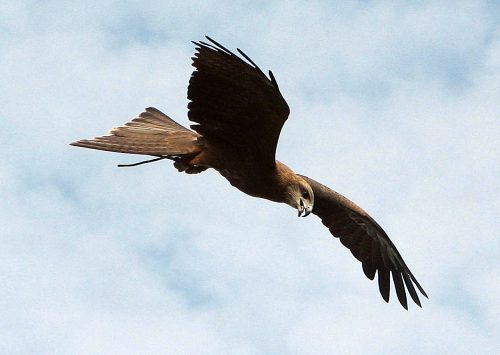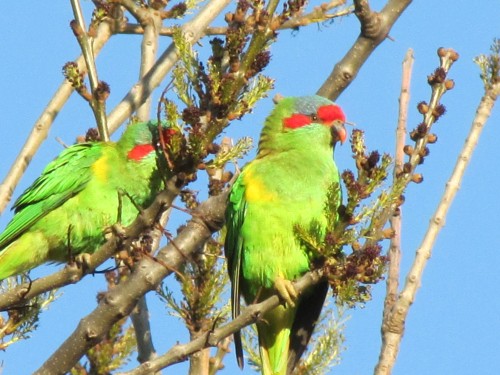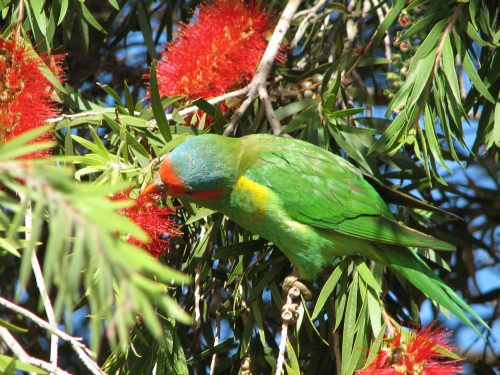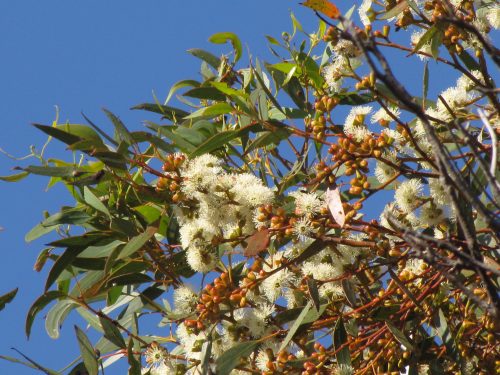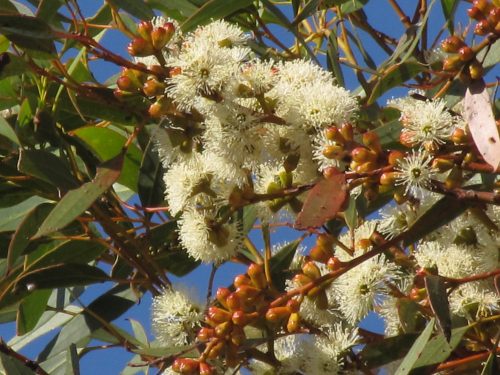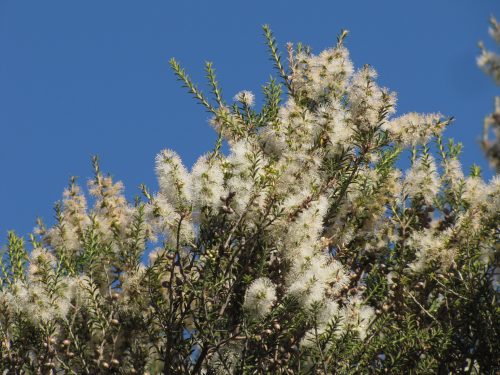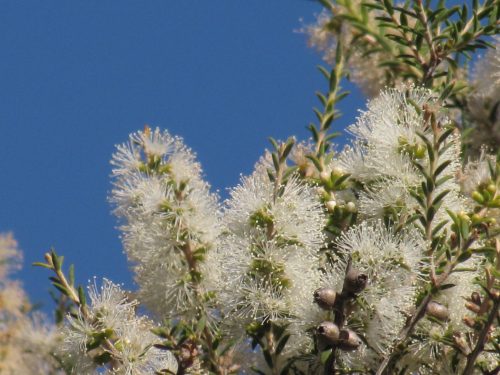An unusual visitor
Garden Birds
On my database, I record the birds I see in our garden, or on our five-acre block, or flying overhead. I have done this every month for well over 30 years now. In more recent times, I have started recording them on a weekly, and sometimes daily, occasions. This has built up a great base of information about the birds we have resident (present every day), regular visitors (every few weeks or months) and occasional (perhaps one or two sightings a year). So far, the tally is over 110 different species. (I don’t know the exact figure because my database is not quite up to date.)
Rare Visitors
Surprisingly, one of the rarer occasional visitors is the Laughing Kookaburra. This species is widespread throughout southern and eastern Australia and is common in many places. It is a widespread species here in the Murray Bridge region of South Australia too, especially along the Murray River. Despite that, it is a rare visitor to our garden. In fact, until a few weeks ago, our last sighting was just over ten years ago.
Harassment
The individual which paid us a recent visit did not have a good time. As I was getting some photos – shown on today’s post – a Grey Currawong kept on harassing it until it flew off in disgust at the poor welcoming party. I guess that the Currawong chased the kookaburra away to discourage it from visiting its nest, though I have not seen any evidence of the Grey Currawongs nesting so far this year. The Currawong itself is not slow about robbing the nests of other birds, either.
Further Reading:
- Grey Currawong – Birds in Backyards site
- Laughing Kookaburra – Birds in Backyards site
- Lunch Snatching Kookaburra
- A Laughing Kookaburra comes to lunch
Beautiful Mallee Ringneck Parrots
Over recent years we have had a family of Australian Ringneck parrots move into our garden. Before that, they were only occasional visitors, but now we see – or hear – them every day. They can be raucous at times. I now consider them to be a resident breeding species in our garden. In fact, only last week I witnessed two of them mating, so we could have even more around in the next few months. They have been constantly investigating a large hollow in one of our mallee trees. The birds we have here are the sub-species Mallee Ringnecks.
At first, we only had two birds, but after breeding, there were more, and now we often count up to about eight birds in our garden, or in the nearby mallee scrub. They chatter away noisily in the nearby trees, often disturbing the peacefulness of our edge of town block of land. We don’t really mind because we love having them around. That is – until they attack our ripening pears, chewing around the stems of each piece of fruit. Each summer I have to drape netting over the trees to minimise the damage.
Last week I was going out the sliding door on to our back veranda. I was heading out to sit in the weak winter sun to do some reading. One of the parrots flew from the nearby tree towards the house just as I came out of the door. It was flying directly towards me, wings and tail spread out fan-like as it came to a stop, landing on the edge of the roof guttering. As the feathers spread out, I glimpsed the beautiful colours of this lovely bird. Sadly, I didn’t have my camera – it happened far too quickly, anyway.
The photo at the top of this post shows the colourful feathers of one of our birds which accidentally flew into my office window last year. It sat on the ground quite stunned for a few minutes before flying off again. The photo below shows another shot of the same bird.
Further reading:
Ku Ring Gai Wildflower Gardens
Whenever we visit our son and his family in Sydney, we try to spend at least a few hours in the Ku Ring Gai Wildflower Gardens. These gardens are about a half-hour drive from his home. The gardens feature a section which has been planted with Australian Native Plants, and the remainder of the gardens is natural scrubland.
There is an excellent new Visitor Centre, manned by helpful, friendly staff. Attached to the centre, there is a small nursery with Australian plants for sale. Groups may organise guided tours of the gardens and sections can be hired for functions, such as children’s birthday parties. To hire the facilities, contact the Ku Ring Gai Council. There are also many walking and cycling tracks throughout the gardens, many of them wheelchair friendly.
On our most recent visit, we had morning tea in one of the picnic areas before going on one of the walks. Later we explored another part of the gardens before moving to a third area for lunch. In all of this time, I had my binoculars and camera at the ready. These gardens can be frustrating at times. On occasions, the garden is filled with birdsong and I have found it hard to keep up with making a list of species seen or heard.
This time, however, although I could hear a few birds, many of them remained frustratingly out of view of my binoculars, as well as hard to find with my camera. Small birds, feeding the upper canopy of tall trees and bushes, make it very hard to get any good shots at all. Although I managed a few photos, I am not happy with any of them. I will just have to go back on our next visit to Sydney.
One of the birds I was able to photograph was the one above. It is a very poor shot and I think that it is a Striated Thornbill, a common species in these gardens. I hope that I can get a better shot on my next visit. In order to get one, the birds will have to sit still a lot longer than they do now. Perhaps someone could train a few for me.
Just after taken the photo of the thornbill, I saw what I think is a Yellow-faced Honeyeater feeding in the tree high above me (see photo above). I was looking almost directly straight up, and the bird stayed high in the foliage. I can just make out the yellow patch on the face next to the eyes.
While I had a frustrating time photographing the birds, some of the flowers were far more cooperative. While there was not all that much flowering, I still managed a few good shots (see above and below).
As a bonus, I managed a nice shot of a Varied Sword-grass Brown butterfly.
Go to the bottom of this post to see links to other posts about these gardens.
Further reading:
Lunch time birding
Fine weather
It is autumn here in southern Australia and this is the favourite season of ours. We generally have very little wind, a few cloudy days but the majority of days are chilly in the morning with occasional frosts, followed by a sunny day. On lovely days my wife and I love to sit out on our back veranda to eat our lunch. This part of our house is overlooking our garden and the nearby mallee trees. It can be a perfect spot to do some birding without disturbing the birds going about their normal daily activities.
Binoculars
In recent days I have taken to also wearing my binoculars while I eat. I must say that I do more birding than eating in this way. The food eventually gets consumed but the interruptions are frequent. Today was a particularly good day with an interesting range of birds. Possibly the most common species in our garden would have to be the House Sparrows and the Common Starling, two introduced species here in Australia.
We also have many Weebills and Yellow-rumped Thornbills. About a dozen of these beautiful thornbills few past only a few metres from where we sat, calling to each other as they flew. The Weebills are harder to see because they tend to forage in the tree-tops and are sometimes hard to pick up as they move in the foliage. Their call is hard to miss, however. It is a similar situation with both the Striated Pardalotes and the Spotted Pardalotes: hard to see but easy to hear.
Talking about calls, one of the more strident bird calls we experience here is the Australian Magpie-lark, shown in the photos at the top of this post. We had two in the garden today but they hardly made a sound. In fact, the female sat in a nearby tall mallee tree preening itself for most of the time we were sitting there. Not a call to be heard and I nearly missed listing her for my database. Also quite inconspicuous today were the resident Australian White-backed Magpies, heard just over the neighbour’s fence but not actually seen during our lunchtime break.
At one stage I commented to my wife that I hadn’t seen the White-browed Babblers in a while. The local family must have heard my comment because a group of about eight flew past a few minutes later, their mewing calls unmistakeable. In the distance, I could hear several Little Ravens calling, and one of them came quite close, investigating the trunk of a nearby tree and looking under the bark for a few beetles or spiders for lunch.
One of the notable birds missing today was the resident Willie Wagtails. I didn’t see either of them, nor did I hear them. That can happen sometimes and I guess that they were feeding some distance away from the house – perhaps on the other side of the building. Or they might have been out in the paddock because we live on a five-acre block. I was also surprised by the lack of honeyeaters. I saw several White-plumed Honeyeaters and a few Red Wattlebirds, but the usually noisy and bossy New Holland Honeyeaters were nowhere to be seen – or heard. Strange.
Over the last five years, we have been delighted to have a family of Superb Fairy-wrens resident in our garden (photo above). We take great delight in seeing them hopping around, flitting from bush to bush or feeding out in the open. Today the family of five – there may be more – were investigating the puddles of rainwater on the swimming pool cover. Several of them even tried it out by having a quick bath. Who needs to supply bird baths?
Every day we have plenty of parrots in our garden – either landing in the trees or flying overhead. We have a noisy group of Mallee Ringneck parrots (photo above) which we see and hear every day so I class them as a resident species. Today we also had several small groups of Rainbow Lorikeets fly overhead. In recent weeks they have been feeding on the flowering mallee trees, but today they just flew over screeching as they went. The local Galah population often lands in some of our trees but today they just flew over in loose flocks numbering from about six to forty.
At one point I actually put down my food and walked quickly out from the veranda to get a better view of two birds gliding high overhead. At first, I thought they were Wedge-tailed Eagles, mainly because they were so high. On closer inspection using my binoculars, I could see that they were Black Kites (see photo above), common in this area but one species I hadn’t seen near our home for quite some time.
In all, I saw or heard 22 species during the half hour lunch break. This is not a huge number, but it was a satisfying break despite that.
I would love to hear about the birds in your garden – use the comments section.
Good birding,
Trevor
Lots and lots of Lorikeets
An influx of Lorikeets
Over recent days we have had an influx of lorikeets in our garden, on our property and along the road leading to our place here on the edge of Murray Bridge in South Australia.
Normally, we have the odd flyover of a small group of Purple-crowned Lorikeets. Occasionally they will land in one of our mallee trees for a short feed, depending on the extent of flowering at the time. They rarely stay for more than a few minutes.
From time to time we also have Rainbow Lorikeets shooting across the tops of the trees at speed. They are often gone in a flash, flying like colourful arrows against a blue sky. They, too, rarely come to settle in our trees.
The current influx of Musk Lorikeets is somewhat unusual. It is the first time in over 12 years that I have recorded it here in our garden. (My database records only go back that far; I am progressively working back through them.) Although it is relatively common in this area, I haven’t recorded it in our garden in all those years. In fact, if my memory is correct, I have recorded this species in our garden on only a handful of previous occasions, all of them more than 12 years ago.
Why the influx of Musk Lorikeets?
This leads me to contemplate the question: “Why now?”
The reasons are clear and far from complex. The last six to eight months have been exceptional from a weather point of view. From late mid-winter last July (2016) we have had well above average rainfall. This extra rain has produced one of the best flowering seasons for many years over the recent summer months (December – February). The eucalyptus mallee trees have flowered prolifically, along with many other local species of shrubs and bushes. Being predominantly nectar eating birds, Musk Lorikeets have flocked to this area. I don’t mind; I love having them around.
While I was watching them feeding in a mallee tree near to our house earlier this week, something spooked them. They flew off over our orchard, wheeled around to the north, then east and like green coloured screeching darts came hurtling back to the tree near me and recommenced feeding. As they flew, I estimated that there were some 40 to 50 birds, far more than one usually sees in a flock here. Having said that, I have seen large flocks flying together while visiting my daughter in Clare in the mid-north of South Australia.
More photos
I have included below, several photos of some of the trees and bushes currently flowering in our garden. These are what the lorikeets have been feeding on.
Further reading:
- Mallee trees
- Purple-crowned Lorikeets
- Purple-crowned Lorikeets at Brown’s Road Monarto
- Rainbow Lorikeets
- Feeding time at the Zoo
- Close views of Musk Lorikeets
